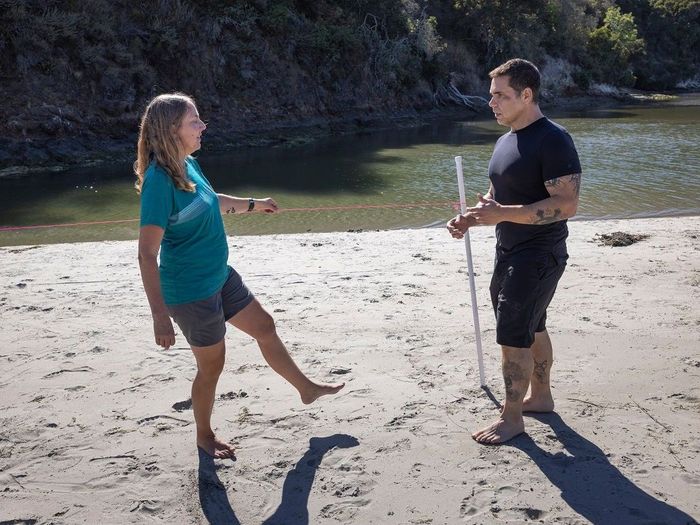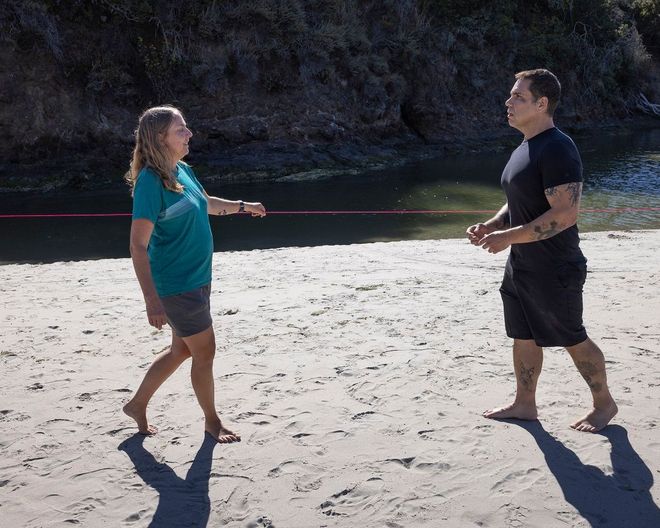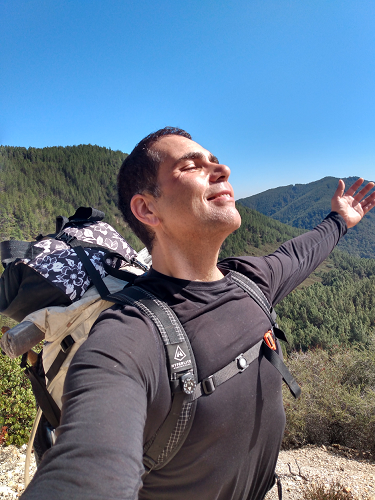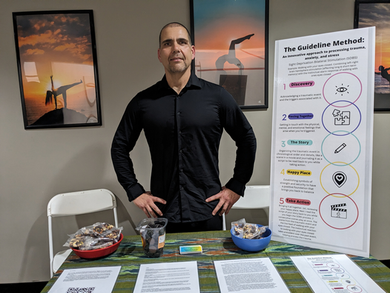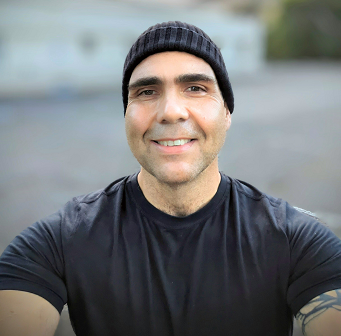The Guideline Method
As your guide, I will help you find the source of your trauma. Together we can unfold a scene from a traumatic event you've experienced. To the best of your ability, we can piece together the details of your story in chronological order, journaling a script for me to read back to you once we take action.
From there we can establish symbols of security and strength. Positive reinforcement that resonates with you. Whether it be a cherished memory or a calming scene we create, this will be a set point or a happy place to calibrate yourself. This will provide you with a foundation to rebalance between stress and progress, bringing you into the now.
Time to take action. With the method I've developed, I will guide you through the Sight Deprivation Bilateral Stimulation (SDBS) process. You will be in control as I assist you along a path toward feeling the weight of mental and emotional stress lift away from you through The Guideline Method.
Pricing
1 Session at 1 Hour: $90
4 Sessions at 1 Hour Each: $270
8 Sessions at 1 Hour Each: $540
To see if The Guideline Method is for you, a free 30 minute consultation can be scheduled.
Sessions can be by phone, Zoom, or in-person. The actual Guideline Method is intended to be in person.
All sessions are the same price, but there may be additional travel charges depending on location for in-person.
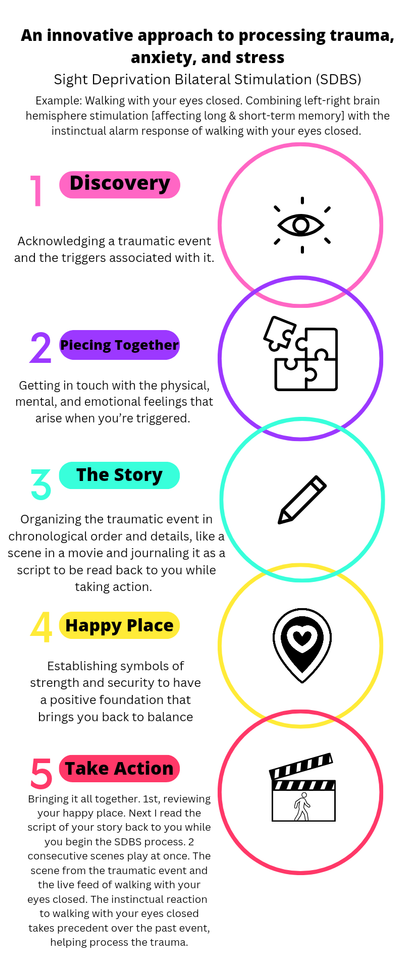
My Story
Ever since I was a young child I could read people. The hidden fear, pain and turmoil in them that affected their behaviors was clear to me. I learned I had a natural knack for calming an internal storm within someone. Realizing I was different, I knew I wouldn't follow a traditional path. seeking self-discovery, adventure and enlightenment, I navigated my way as a nomad with no destination. I faced many challenges on this journey. Choosing homelessness as a rite of passage, I experienced hunger, theft, violence, drug abuse, injuries, illness, incarceration, and despair. Along that road, I made friends in the underground music scene, got off the streets, learned some basic music skills, and played in bands to a rough and seedy crowd. I became very excessive, indulging in everything available to me. I got up to 400 lbs, living in physical, mental, and emotional pain. I decided I was going to change my life and become healthy and fit. It took a lot of energy and perseverance to lose that weight through diet and exercise. Even though my quality of life was improving, I had many heartbreaking experiences to face. Good friends dying young, the death of my father at age 60, the tragic and unexpected death of my brother on Mother's Day at her house when he was 47, and the deterioration and death of my mother who witnessed her son's death, and I nearly died in 2018 from a respiratory infection.
I began having anxiety attacks in 2020. I had to find a way to apply my internal storm-calming skills to myself. I became an advocate of yoga, breathwork, and cold immersion. Since this was during the COVID-related shelter-in-place, gyms were closed, so I would run on the beach after breath work, and jump in the ocean. This routine greatly helped, but I continued to have traumatic scenes playing through my mind on a loop. One day while running on the beach in Cayucos, California, while trying to relieve the trauma stuck in my head and body, a sudden urge to close my eyes while running entered my thoughts. I tried to shake it off, but the urge became stronger. I closed my eyes and was surprised that I could only go a few steps even though I could see a clear unobstructed path for a long distance ahead. I slowed my pace a bit and kept trying to see how far I could get. I still didn't get many steps in before I felt that I had to open my eyes. I noticed that for those few seconds, the trauma loops had blurred out of focus. I knew I was onto something. I added this practice to my routine. In time, the distance I covered with my eyes closed increased and the intensity of anxiety and stress from trauma decreased. I eventually got up to 120 steps, the furthest I'd ever walked with my eyes closed. it was at that moment I dropped to my knees with tears of joy. It was gone! I could physically feel the weight of reoccurring scenes of fear and pain lifting away from me. I felt I had discovered a miracle. The ability to heal myself without medications in a holistic way became real. I had to share this method with the world. I explained this method to my dear friend Zarah. She said “ You have to name it.” My mind kept repeating “Walking blind,” but it just wasn't catchy. Zarah suggested I look up the word ‘blind’ in Latin. I did, and it’s ‘Caecus’, which phonetically is Cayucos, the place I discovered this newfound method. We both got chills running down our spines and knew something magical was unfolding.
As an Internationally Certified Mental Health Coach I'm here to help the world with what I now call "The Guideline Method".
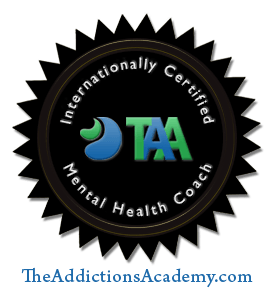
400 lb Days
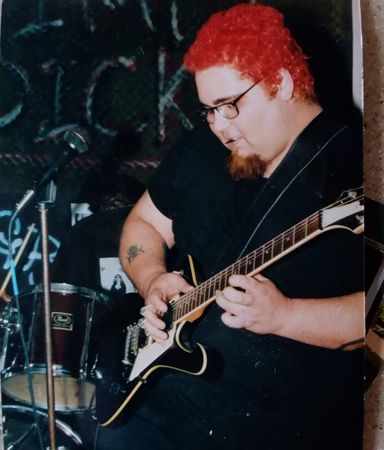

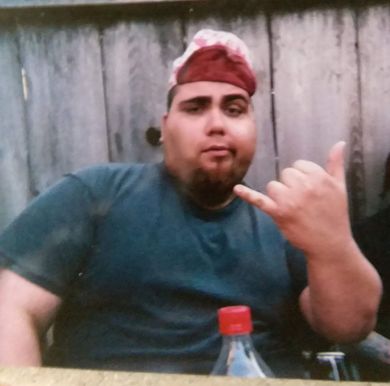
Frequently Asked Questions
-
What is trauma?
A challenging emotional consequence that a stressful event can have on a person in a
recurring memory pattern triggered by sensory input associated with the experience.
-
Is anxiety a part of trauma?
While someone with trauma is likely to have anxiety as a symptom, not everyone with anxiety
has experienced trauma.
-
What is a trigger?
Sights, sounds, smells (any sensory input) or thoughts that remind you of a traumatic event in
some way.
Example: Getting a tight feeling in your chest, flushed cheeks and sweaty palms every time you
drive past a place you got into an accident.
-
What is bilateral stimulation?
Sensory stimulation alternating from left to right (or vise versa), balancing between the left and
right brain hemispheres.
-
What is long and short-term memory?
Short-term memory is the capacity to recall a small amount of information from a recent time
period. Long-term memory is the capacity to recall larger memories from a longer time ago.
-
How does long and short-term memory relate to the left and right brain hemispheres?
Long-term memory is associated with the left brain hemisphere and short-term memory with the right brain hemisphere.
-
What is a mental wellness coach?
A mental wellness coach assists people in developing skills to help them overcome obstacles
they may be facing. They also provide a fresh perspective to help their clients reframe thinking
patterns, better manage emotions, address problems effectively and identify personal strengths.
Contact
How can I help you?
Sign up to our newsletter
We will get back to you as soon as possible
Please try again later
Are you ready to book an appointment? Click below to schedule your first phone or Zoom appointment:
The Guideline Method - All Rights Reserved | Website by BizBolster Web Solutions, LLC

